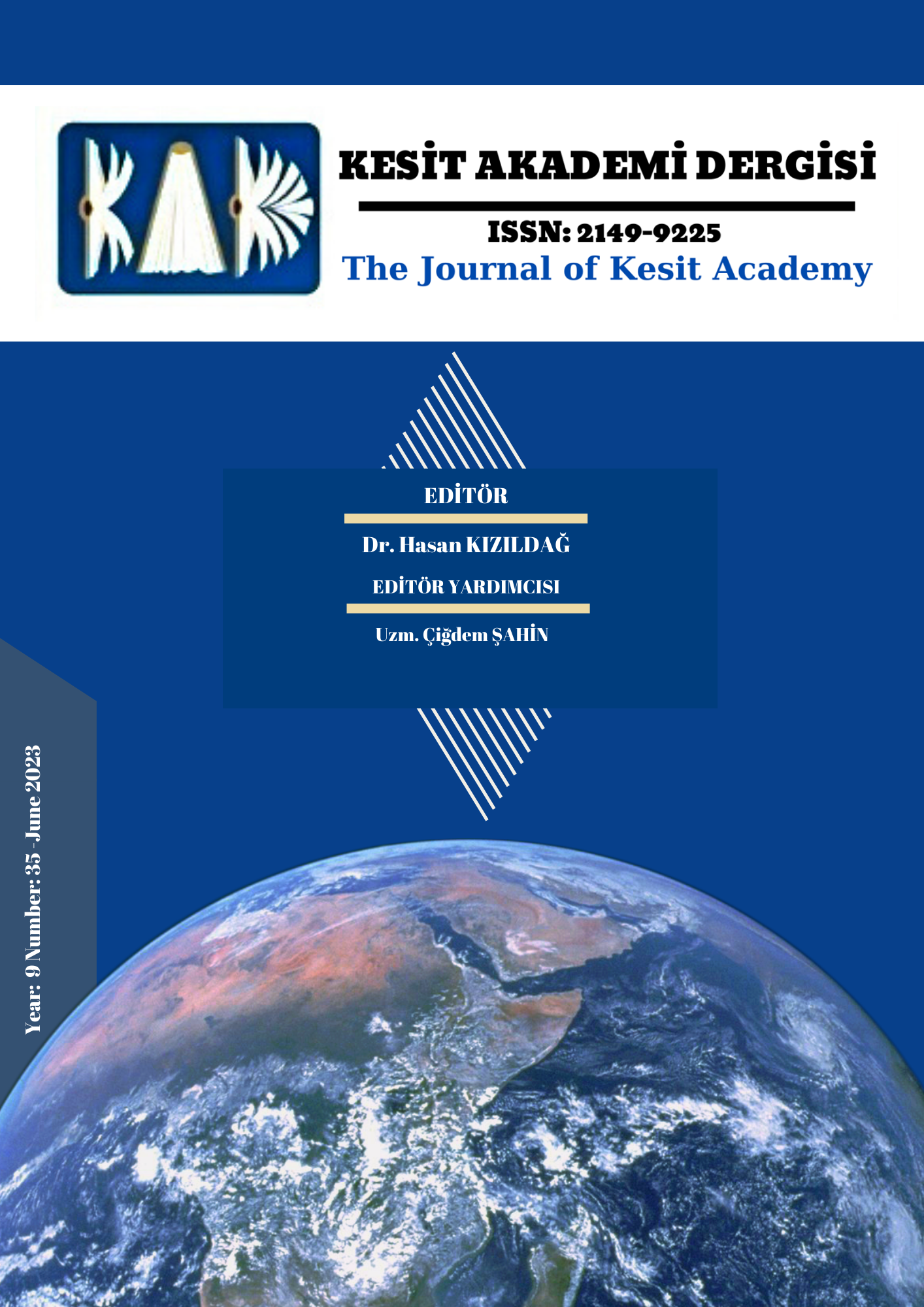Author :
Abstract
T.S. Eliot'un 20. yüzyılın en önemli şiiri olarak kabul edilen “The Waste Land (Çorak Toprak),” eseri modernizm olarak bilinen edebi dönemi tanımlar ve modern dönemden yansımalar ve parçalar içerir. Eliot, şaşırtıcı siyasi, kültürel, sosyolojik, psikolojik ve ahlaki değişimlere tanık olan savaş sonrası dönemin önemli endişelerinden bazılarını modern dünyanın yüzüne yansıtır. Birinci Dünya Savaşı'nın modern dünya üzerindeki hesaplanamaz sonuçlarını hesaplar, batı medeniyetinin yok olma tehdidi altında olduğunun ve medeniyetlerin ölümlü olduğunun farkındadır, bu yüzden yeni düzen biçimleriyle ilgilenir. Şiirin sonunda yenilenme gücü, yaratıcı yıkım döngüleri kurar, batı medeniyetinin geleceğine umutla bakar. Bu makale, entropi kavramını kullanarak Eliot'ın harap olmuş, parçalanmış, düzensiz ve yaşlanan batı medeniyetini ve gelecekteki herhangi bir kültürel, sosyal ve ahlaki yeniden yapılanmayı nasıl ele aldığını araştırıyor. Şiirin kitabesinde yer alan Cumae'li Sibyl karakteri, entropi kavramını, enerjinin düzensizliğe ve atalete dönüşmesini metaforik olarak yansıtmaktadır. Batı medeniyetinin vücut bulmuş hali olan Sibyl, batı medeniyetinin düzensizliğe, bozulmaya ve farklılaşan enerjinin kaybına doğru entropik hareketini temsil eder. Onun küçülüp büzüşme ve yaşlanma süreci, batı dünyasının güzellikten, gençlikten ve enerjiden yoksun fiziksel, ruhsal ve kültürel yaşlanmasını temsil ediyor. Onun, dayanılmaz bir şekilde zaman içinde askıya alınması, yeni bir başlangıç için sona erecek olan batı uygarlığının uzun ömürlülüğünü temsil ediyor.
Keywords
Abstract
T.S. Eliot’s “The Waste Land,” considered the most significant poem of the twentieth century, defines the literary period known as modernism and includes the reflections and fragments from modern period. Eliot reflects some of the significant concerns of the post-war period that witnessed the astonishing political, cultural, sociological and psychological and moral changes to the face of the modern world. He reckons with incalculable consequences of the First World War to the modern world, he is aware of Western civilization’s being under threat of destruction and the mortality of civilizations, that’s why, he is concerned with new ways of ordering. At the end of the poem, he installs power of renewal, cycles of creative destruction, he looks to the future of the western civilization with hope. This article explores Eliot’s engagement with the ruined, fragmented, disordered and aging western civilization and any future cultural, social and moral reconstruction by using the concept of entropy. The character, the Sibyl of Cumae in the epigraph of the poem reflects the concept of entropy, energy‘s turning into disorder and inertia, metaphorically. Sybil who is the embodiment of the western civilization represents the entropic movement of the western to disorder, loss of differentiating energy and degradation. Her withering and aging process represents the physical, spiritual and cultural aging of the western world without beauty, youth and energy. Her unbearable suspension in time represents the longevity of the western civilization that will end for a new beginning.





